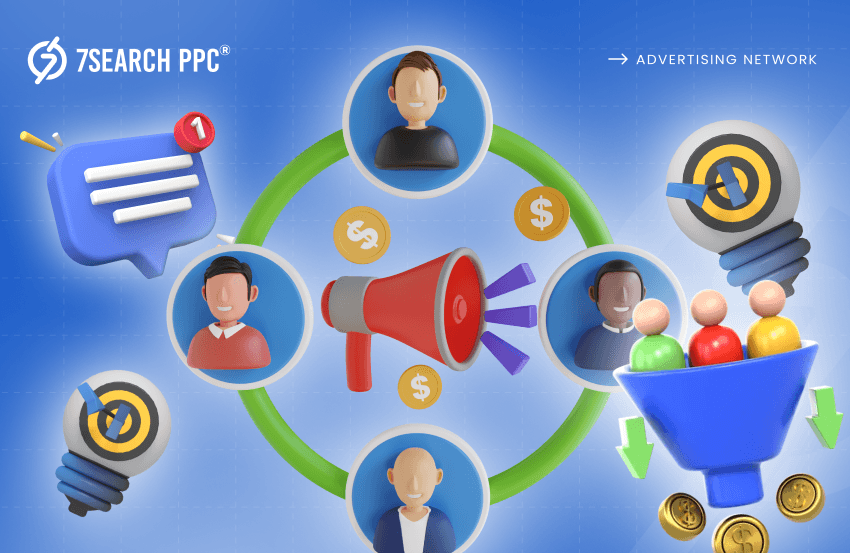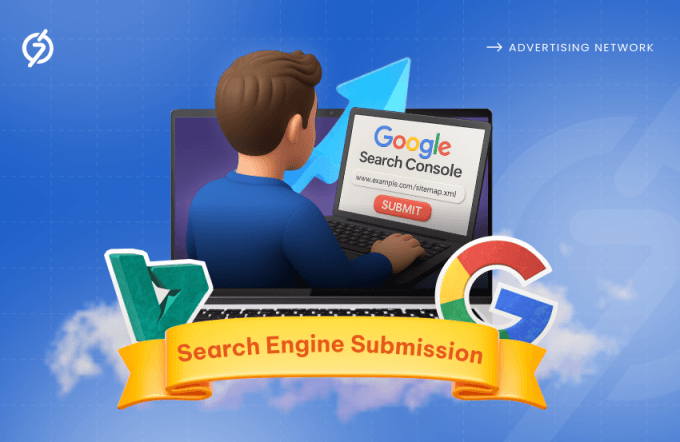Lead Generation: What is it?
Lead Generation identifies and attracts potential customers for a business’s products or services. In this, we aim to generate interest and gather contact information from potential customers, which can then be used to nurture the leads and convert them into paying customers.
Lead Generation can be achieved through various marketing and advertising strategies, such as content marketing, social media marketing, email marketing, search engine optimization, pay-per-click advertising, and referral marketing.
The Various Leads Types
There are various methods for lead generation, including:
Inbound Lead Generation: This method involves creating valuable content, such as blog posts, e-books, and webinars, to attract potential customers to your website and engage with your brand.
Outbound Lead Generation: This approach directly reaches potential customers through cold calling, email marketing, or advertising.
Event Lead Generation: This method involves participating in the industry events, such as trade shows and conferences, to meet potential customers and generate leads.
Referral Lead Generation: This type encourages existing customers to refer their friends and family to your business.
Social Media Lead Generation: This involves leveraging social media platforms to connect with potential customers and build relationships.
Direct Mail Lead Generation: This approach involves sending physical mail, such as postcards or flyers, to a targeted audience to generate leads.
Direct Mail Lead Generation: Direct mail is a marketing approach involves sending physical mail, such as postcards or flyers, to a targeted audience to generate leads.
Pay-Per-Click Lead Generation: This method (PPC Lead Generation) involves running targeted ads on search engines or social media platforms to drive traffic to your website and leads.
Content Marketing Lead Generation: This involves creating and sharing valuable content, such as blog posts, videos, and ad podcasts, to attract potential customers and generate leads.
Hot Leads
Hot leads refer to potential customers who have demonstrated a high level of interest in the company’s products or services and are likely to convert into paying customers. These leads are considered “hot” because they are actively engaged and interested in making a purchase. Some characteristics of hot leads include:
- They have engaged with the company’s marketing content, such as filling out a contact form or downloading a white paper.
- They have shown a high level of engagement on the company’s website, such as spending a significant amount of time on the site or repeatedly visiting specific pages.
Cold Leads
Cold Leads refer to potential customers who have not yet shown interest in a company’s products or services. Some characteristics of cold leads include:
- They may have been obtained through a list purchase or lead generation without any prior relationship or interaction with the company.
- They may require more education or information about the company’s products or services before becoming interested in purchasing.
Warm Leads
Warm Leads refer to potential customers who have already shown some interest in a company’s products or services. Some characteristics of warm leads include:
- They may have visited the company’s website, subscribed to a newsletter, or engaged with the company on social media.
- Warm Leads can come from various sources, including referrals, social media interactions, email marketing campaigns, and previous customers.
Information Qualified Leads (IQLs)
Information Qualified Leads (IQLs) are leads that have been pre-qualified based on the information they have provided to a business. IQLs are considered a step above marketing qualified leads (MQLs), as they have provided more detailed information about their needs, interests, and buying behavior.
Marketing Qualified Leads (MQLs)
Marketing Qualified Leads (MQLs) are potential customers interested in a company’s products or services based on their behavior or demographics. They are usually identified through marketing efforts such as website visits, content downloads, social media engagement, or attending a company event. MQLs are valuable because they have demonstrated interest or engagement with a company’s marketing message.
Sales Ready Leads (SRLs)
A Sales Ready Lead (SQL) is a potential customer who has shown a high level of interest in the company’s products or services and is deemed ready to engage in direct sales conversations with the company’s sales team.
SQLs are valuable to sales teams because they have demonstrated a strong intent to purchase and are more likely to convert into paying customers.
Sales Qualified Leads (SQLs)
Sales Qualified Leads (SQLs) are potential customers the marketing team has qualified as being ready to engage in direct sales conversations, and they will probably convert into paying customers.
SQls are typically identified through behavioral and demographic data and direct interactions with the sales team.
The Process of Generating Leads
The process of generating leads typically involves several steps:
- Defining your target audience.
- Creating landing pages.
- Developing & promoting your lead magnet.
- Nurturing your leads.
- Qualifying your leads.
Conduct Research
Lead Generation is a crucial aspect of any successful business. Research in this area can help businesses better understand their target audience and improve their lead-generation efforts. Some areas of research that businesses can explore to improve their lead generation:
- Target audience research.
- Keyword Research.
- Content Research
- Lead tracking and analytics.
Make Excellent Content
Some tips for creating excellent content that can drive lead Generation are as follows-
- Know your audience
- Provide value
- Optimize for search engines
- Make it visually appealing
- Promote your content
Create a Database for Lead Generation
A database for lead generation is a collection of data organized in a way that allows businesses to keep track of and manage information about potential customers or clients, also known as leads.
- The ‘leads’ table is the main table in the database and stores information about each lead.
- The ‘lead sources’ table stores information about the different sources of leads.
- The ‘lead statuses’ table stores information about the different statuses a lead can have. This table would typically have fields for the ‘name’ of the status, such as “new lead” or “closed,” and a ‘description’ field to provide more information about what each status means.
Score and Qualify Leads
Scoring and qualifying leads is an important process in lead generation and management. It involves evaluating and assigning a score or a qualification level to each lead based on their likelihood of becoming a customer.
To automate lead scoring and qualification, businesses can use lead scoring and qualification tools or software that assign scores and qualification levels to leads based on their behavior and demographic information.

Lead Generation Techniques and Case Studies
Some common lead generation techniques are-
- Content marketing
- Social media marketing
- Search Engine Optimization
- Paid advertising
- Referral marketing
Some case studies of successful lead generation campaigns are-
- HubSpot
- Unbounce
- Zendesk
- Dropbox
Content Marketing
Content Marketing is a highly effective lead-generation technique that involves creating and distributing valuable, relevant, and consistent content to attract and engage a target audience. Some ways in which content marketing can help generate leads are-
- Attracting the right audience.
- Building trust and authority
- Lead magnets
- Social media promotion
- SEO benefits
Email Marketing
Email marketing is a type of digital marketing that involves sending commercial messages or promotional content to a group of people via email. It aims to engage and nurture relationships with prospects and customers, encourage repeat business, and ultimately increase sales. Some ways in which email marketing can help generate leads are:
- Building a subscriber list
- Personalization
- Lead magnets
- Analytics
Social Media Marketing
Social Media Marketing is a type of digital marketing that involves creating and sharing content on social media platforms, such as Facebook, Instagram, Twitter, LinkedIn, and others, to promote a business, product, or service. Some ways in which social media marketing can help generate leads are-
- Building a following
- Engaging with followers
- Paid advertising
- Lead magnets
- Analytics
Coupons, Discounts, and Free Trials
Coupons, discounts, and free trials can be effective tactics for lead generation by offering potential customers an incentive to take action and become paying customers. Some ways in which coupons, discounts, and free trials can help generate leads:
- Attracting new customers
- Encouraging repeat business
- Creating urgency
- Capturing leads.
Online Ads
Online Ads are a form of digital advertising that can generate leads by reaching potential customers through various channels. Some ways in which online ads can help create leads-
- Targeting specific audiences
- Increasing visibility
- Encouraging clicks
- Tracking performance
Referral Marketing
Referral marketing is a strategy that encourages customers to refer their friends, family, and colleagues to a business in exchange for a reward.
- Incentivizes existing customers
- Leverages word-of-mouth marketing
- Rewards for referrals
- Well-designed program
Optimal Techniques for Lead Generation
Some optimal techniques for lead generation are-
- Content Marketing
- Search Engine Optimization
- Pay-Per-Click Advertising
- Email Marketing
- Social Media Marketing
- Referral Marketing
Use your Data
Data plays a crucial role in lead generation by helping businesses to identify and target potential customers more effectively. Some ways in which businesses can use data in lead generation are-
- Identify ideal customer profiles
- Personalize lead generation efforts
- Use predictive analysis
- Analyze website traffic
- Lead Scoring
Messaging Must be Consistent
Consistency in messaging is a key aspect of effective communication, whether marketing, branding or any other type of communication. Some reasons why messaging must be consistent are-
- Builds brand identity
- Increases credibility
- Improves recognition
- Supports brand positioning
- Boosts engagement
A/B Testing
A/B testing, or split testing, compares two versions of a webpage, email, ad, or other marketing assets to determine which version performs better. Here is how it works-
- Develop two versions
- Randomly assign visitors
- Collect data
- Analyze results
- Implement
Utilizing CRM Technology’s Strength
Customer Relationship Management (CRM) technology is designed to help businesses manage their interactions with customers and streamline their sales processes. Some of the strengths of CRM technology include the following:
- Centralized customer data
- Automated Processes
- Improved Communication
- Analytics and Reporting
Every Stage, Create Attractive Offers
Creating attractive offers is an essential aspect of any marketing strategy. Some tips for creating attractive offers at each stage are-
- Awareness stage
- Consideration stage
- Conversion stage
- Loyalty stage
Integrate Social Media
Some tips for effectively integrating social media into your marketing efforts are-
- Identify your target audience
- Create a social media plan
- Use a consistent brand voice
- Engage with your audience
- Use Visual Content
- Use Social Media Advertising
Clean up your Landing Pages
Some tips for cleaning up your landing pages are-
- Simplify your design.
- Use clear, concise messaging.
- Optimize your forms
- Use high-quality images and videos.
Use your Partners
Some tips for using your partners in lead generation are-
- Identify potential partners.
- Develop a partnership strategy.
- Establish clear goals and expectations.
- Provide value to your partners.
Bring in your Sales Staff
Some ways to involve your sales staff in your lead-generation efforts are-
- Train your sales staff
- Develop a lead-scoring system
- Set clear goals and expectations
- Provide regular feedback and support
- Use technology to track and manage leads.
Promote, Promote, Promote
Promotion is a critical aspect of lead generation, as it helps to get your message in front of potential customers and build awareness of your brand and offerings. Some ways to effectively promote your lead generation efforts-
- Use a variety of channels
- Create compelling content
- Leverage social media
- Optimize your website
- Use paid advertising.
Prioritize Lead Generation
Some tips for effectively prioritizing lead Generation are-
- Set goals
- Develop a plan
- Allocate resources
- Create a system
- Measure and optimize
- Prioritize lead nurturing













![How To Monetize Social Media Traffic [A Guide To Make Money From Followers] 4 Monetize Social Media Traffic](https://www.7searchppc.com/blog/wp-content/uploads/2025/11/Monetize-Social-Media-Traffic-680x442.png)

![Proven Blog Traffic Tips To Grow Your Audience In 2025 [A Beginner-Friendly Guide] 6 Blog Traffic Tips](https://www.7searchppc.com/blog/wp-content/uploads/2025/10/Blog-Traffic-Tips-680x442.png)

